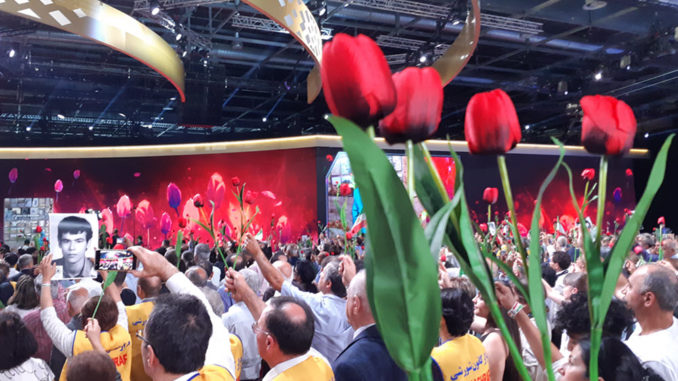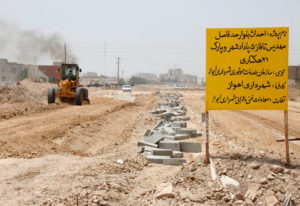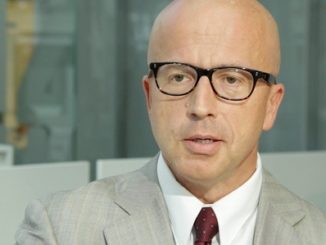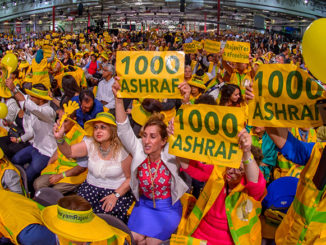
The Iranian regime is systematically destroying the graves of victims of the 1988 massacre in Iran and removing the traces of this massacre throughout the country in an attempt to cover up its crimes and evade the consequences of this horrific crime against humanity.
Amnesty International has reported that Iranian regime is building roads over the mass graves of the political dissidents who were forcibly disappeared and extrajudicially killed in Ahvaz, southern Iran. The international human rights organization has launched an urgent campaign to prevent the Regime from building the roads and destroying the mass graves of political prisoner who were massacred in the 1980s.
 In this regard, Mrs. Maryam Rajavi, President-elect of the Iranian opposition, the National Council of Resistance of Iran (NCRI), urged the international community to immediately take action to prevent the Iranian regime’s systematic destruction of the evidence of the 1988 mass murder of political prisoners in Iran.
In this regard, Mrs. Maryam Rajavi, President-elect of the Iranian opposition, the National Council of Resistance of Iran (NCRI), urged the international community to immediately take action to prevent the Iranian regime’s systematic destruction of the evidence of the 1988 mass murder of political prisoners in Iran.
Mrs. Rajavi emphasized: As the clerical regime’s efforts to prevent the growth of the Call-for-Justice movement has failed and it has not managed to send the massacre of Iranian political prisoners into oblivion, the ruling mullahs are desperately trying to remove the traces for this massacre in a bid to evade the consequences of this genocide and huge crime against humanity.
She warned that the destruction of the graves of the martyrs – whether aimed at inflicting a vicious psychological torture on their families or at removing the evidence of this crime against humanity – is a major crime in itself whose masterminds and perpetrators must be held accountable to face justice.
The following is the NCRI’s Statement in this regard:
Maryam Rajavi Calls to Prevent Destruction of the Graves of Victims of 1988 Massacre in Iran
 The President-elect of the National Council of Resistance of Iran, Mrs. Maryam Rajavi, urged the UN Secretary General, the UN Security Council, the UN Human Rights Council, the UN High Commissioner for Human Rights, and international human rights organizations to immediately take action to prevent the Iranian regime’s systematic destruction of the graves of victims of the 1988 massacre in Iran and removal of the traces of this massacre throughout the country, particularly in Ahvaz.
The President-elect of the National Council of Resistance of Iran, Mrs. Maryam Rajavi, urged the UN Secretary General, the UN Security Council, the UN Human Rights Council, the UN High Commissioner for Human Rights, and international human rights organizations to immediately take action to prevent the Iranian regime’s systematic destruction of the graves of victims of the 1988 massacre in Iran and removal of the traces of this massacre throughout the country, particularly in Ahvaz.
As the clerical regime’s efforts to prevent the growth of the Call-for-Justice movement has failed and it has not managed to send the massacre of Iranian political prisoners into oblivion, the ruling mullahs are desperately trying to remove the traces for this massacre in a bid to evade the consequences of this genocide and great crime against humanity, Mrs. Rajavi added.
She warned that the destruction of the graves of the martyrs –whether aimed at inflicting a vicious psychological torture on their families or at removing the evidence of this crime against humanity– is a major crime in itself whose masterminds and perpetrators must face justice and be held accountable.
The inhuman clerical regime has in recent weeks razed the graves of the victims of the 1988 massacre and other victims of execution in the 1980s in Ahvaz, capital of Khuzestan Province (in southwestern Iran), and is constructing roads in their place in order to remove all traces of these graves.
In late June, the regime had demolished the graves of PMOI martyrs in Vadi-e Rahmat Cemetery in Tabriz, capital of East Azerbaijan Province (northwestern Iran). In the previous month, the mass graves of the martyrs of the 1988 massacre and other PMOI martyrs in Behesht-e Reza Cemetery in Mashhad, capital of Razavi Khorasan Province (northeastern Iran), had been destroyed on the orders of the clerical regime’s officials.
Secretariat of the National Council of Resistance of Iran
July 27, 2018
Authorities in Iran destroy mass grave in Ahvaz where victims of the #1988Massacre are buried. @UNHumanRights must take urgent action https://t.co/gMlG3mAEhh @UN_HRC @FCOHumanRights @StateDRL @USAdarFarsi @nikkihaley @CanadaUNGeneva @UKMissionGeneva @AmnestyIran @FranceONUGeneve pic.twitter.com/nOHFIIvDKL
— JVMI (@jvmifoundation) July 21, 2018




